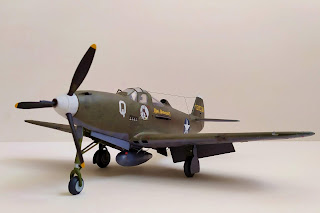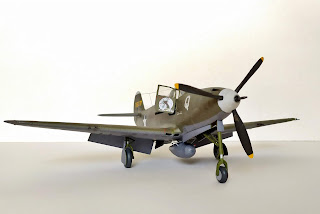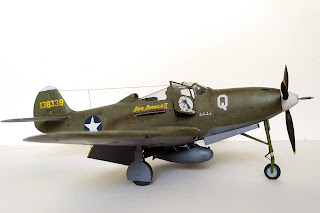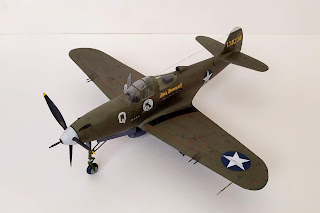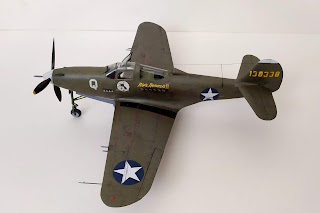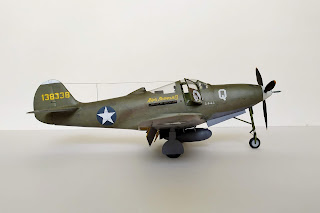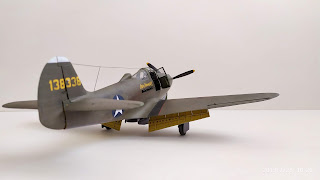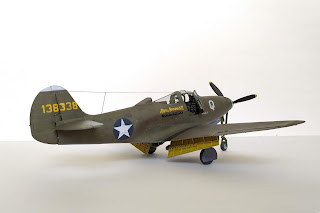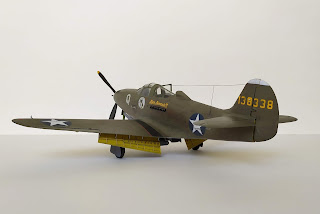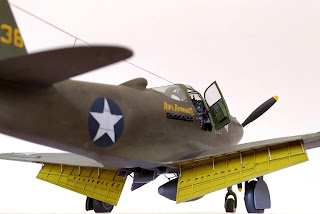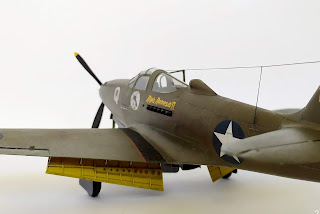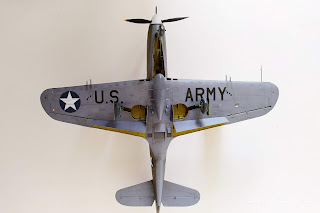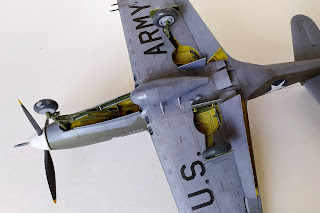Hello! Parallel to MiG-21 model, I was working on another one. A few days ago, its construction also came to an end. Today, I'll show you the Bell P-39D Airacobra model, an airplane whose construction differs from the classic fighters from World War II. The engine was placed in the central part of the fuselage behind the cockpit and drove the propeller which can be found on the front. The plane has tricycle undercarriage and 37 mm cannon which was firing through the propeller hub. Access to the cockpit leads through sideways opening "car doors". Such design solutions have of course influenced the silhouette of the aircraft, which is one of a kind.
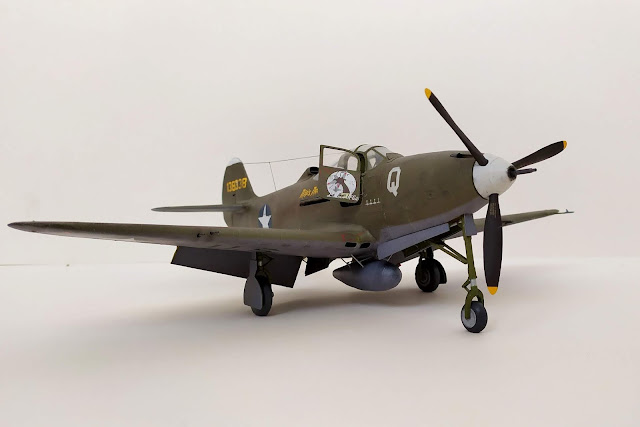
Modelling is not only building the models, but this is also the historical background associated with the model. The story of the P-39-s is as remarkable and interesting as its construction. At the begin of World War II on the Pacific, Airacobra was one of the basic aircraft used by the USAF. However, they did not meet the expectations placed on them. The pilots flying on them complained about the insufficient speed at medium and high altitudes. P-39-s found itself outclassed, they were giving way to Japanese fighters in almost every way. They have not got a positive reception from the Royal Air Force either. The British sold most of their planes to the Soviet Union under the Lend-Lease Act. The next Airacobras were delivered by the Americans, in total of about 5000 planes. In contrast to the Pacific theatre and Western Front, the environment of the Soviet Front did not demand the high-altitude performance. Most air combat over the Eastern Front took place on low altitudes and did not demand high speed. Returnable, durable and heavily armed Airacobra worked very well there. Russian pilots, despite the initial difficulties in pilotage, praised these planes very much and were very successful on them. According to some pilots, this plane at low altitudes exceeded its main rivals - Bf-109 and Fw-190. Airacobra was one of the main and best fighters used by the USSR almost till the end of the war.
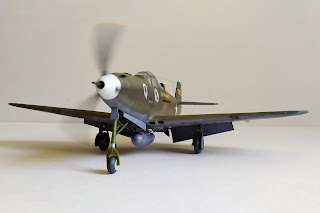
Let's get to the model. The Kartonowy Arsenał Publishing House offers two complete models in this issue. I chose a plane in American painting scheme (the second one is the Soviet one). My model represents a machine from the 36 Fighter Squadron (New Guinea, summer 1942). Lt. Donald C. McGee, one of the most successful American pilot flying on Airacobra, flew on this particular plane. I started building this model at the end of January 2019, so it took me about half a year with breaks to finish it. In my opinion, it is one of the best paper models I have ever had the pleasure of working on. I enjoyed the build so much that I intend to build a second model in Soviet painting scheme in the future. Despite the fact that the build was awesome, I must say that it was not easy. I had a few difficulties with fitting transitions between wings and fuselage and air intakes on the leading edges. I didn't avoid mistakes. I think the biggest one I made was while making the canopy frames and canopy itself. I wanted to press it by myself, unfortunately, this is a matter in which I do not have much experience. Although the transparency of the self-made canopy was really good, fitting with the fuselage was not satisfying. I removed the frames from her and put them on the other canopy which I bought from Publishing House. Obviously, the manoeuvre of re-sticking influenced quality. Everything else went very well and without problems. I decided to leave the opened door to the cockpit on the right side. My aim was to expose this unique construction solution. Interesting fact, only the right-hand door was used as the normal way of getting in and off. The left-hand door was designed only as an emergency exit. During varnishing (Tamiya TS-13 and TS-80), talcum appeared in several places. Most of them disappeared after applying one layer more of gloss. Unfortunately, in a few places, it remained. Wings machine gun barrels in this version of Airacobra are nicely exposed, so I took a metal set from Model Master. I made the barrel of the 37 mm cannon from a filed medical needle with a diameter of 1.1 mm. I cut all of the frames myself. Another interesting fact, the amount of lead that I had to put in the nose of the fuselage so that the model did not lean on the tail exceeded all my expectations. I had to open the nose twice in order to add a few more grams of lead. And that would be all, enjoy the photos!

